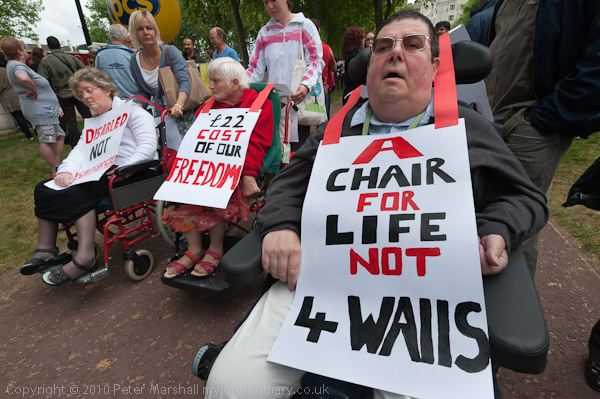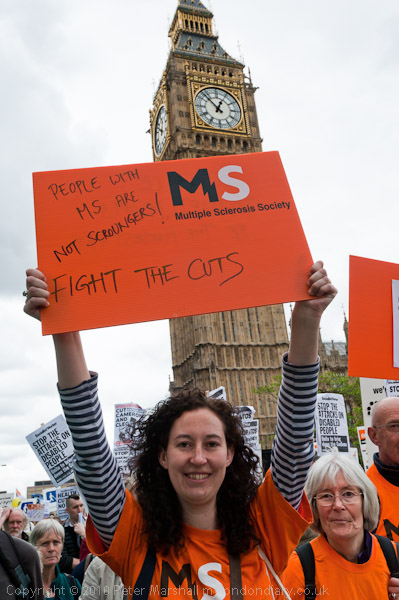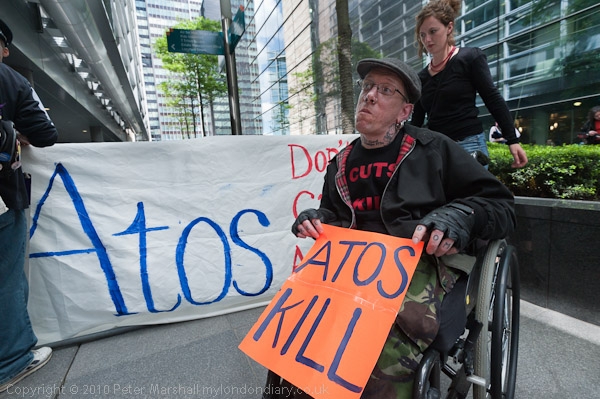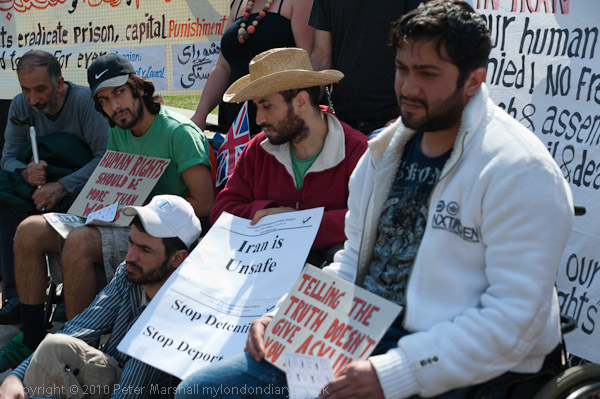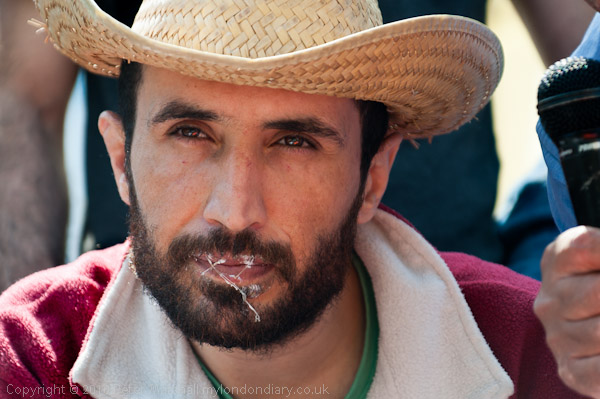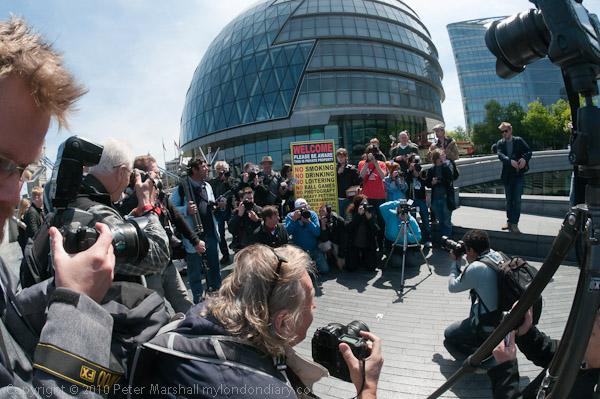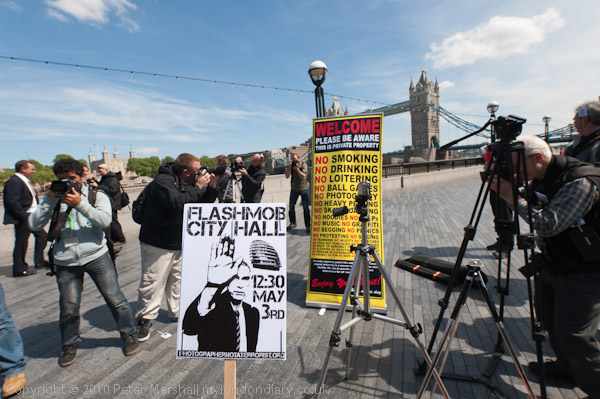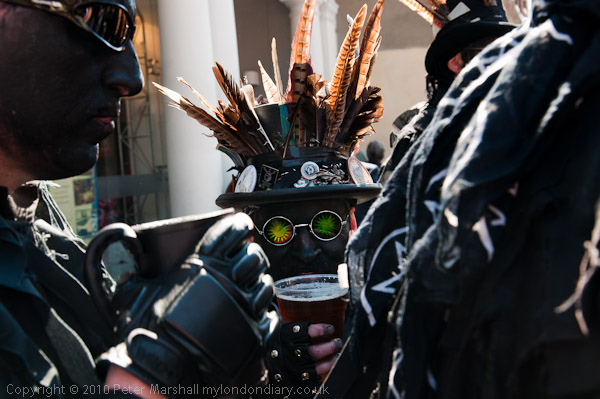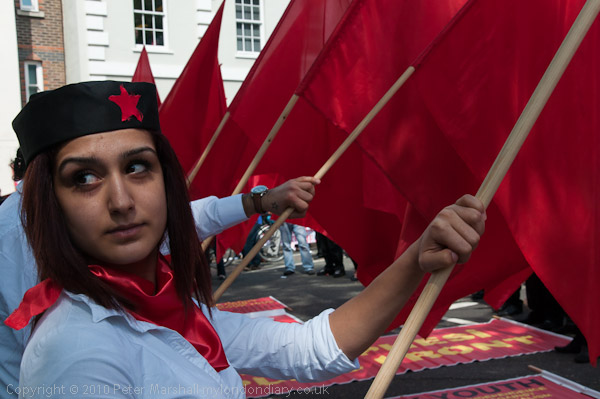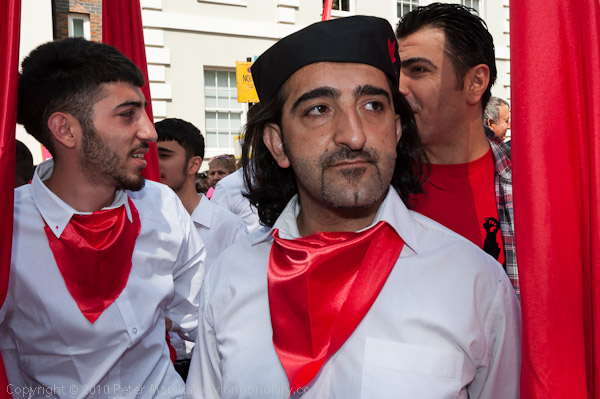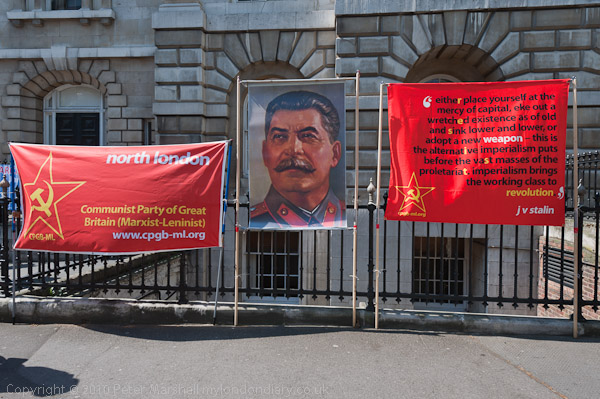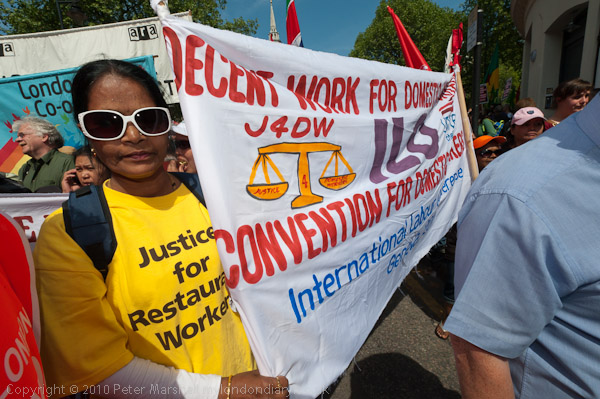Last week I photographed a kind of composite demonstration opposite Downing St. Stop the War and CND had organised a demonstration to demand an end to the bombing of Libya, but what happened was rather more complicated.
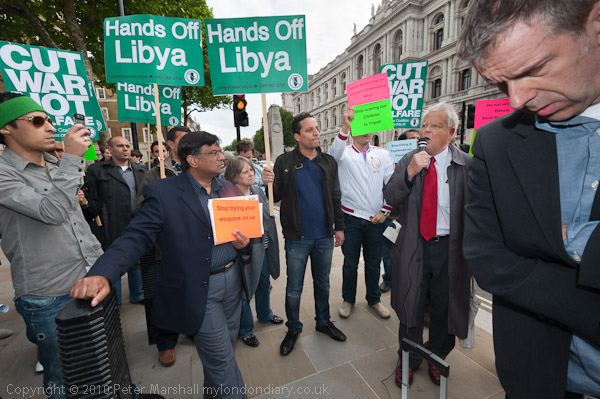
Along with the regulars at Stop the War events, this protest, like the last one I photographed against the NATO bombing of Libya also attracted a number of Libyan supports of Gaddafi, complete with their green flags, headbands and scarves. This is of course a free country, and no reason at all why they shouldn’t turn up to demonstrate, but their presence is perhaps a little embarrassing as the official Stop the War policy appears to be that they do not support Gaddafi, and a video of their previous demonstration has a Libyan saying that Gaddafi must go.
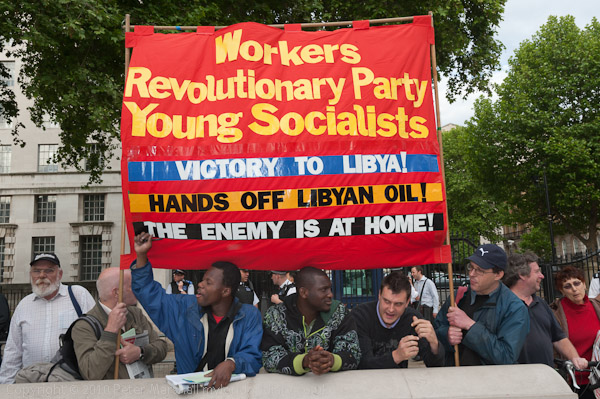
A few yards down the pavement was another small group around the banner of the Workers Revolutionary Party Young Socialists, with their own megaphone and their own policy, essentially that they support Gaddafi as a liberator of his people and that the Libyan opposition movement is a bourgeois tool of imperialism which they back him in trying to smash. At one point there was a fairly heated argument between them and one of the leading members of Stop the War, who made it clear that they were not welcome and should organise their own protests. The group did move a few yards further away after this, although later the police moved them back.

A few minutes after the protest started, another small group, mainly Libyans, arrived bringing an amplifier and speakers in the back of a vehicle and started setting up their protest in opposition to the Stop the War, calling for a greater effort by the NATO forces to help them in their struggle to get rid of Gadaffi.
With the rest of the photographers I was going backwards and forwards between the groups, and so there was plenty to take photographs of. The Libyan opposition with their ‘freedom’ flags and a rather more animated approach were certainly the most photogenic of the groups, and I was pleased with a series of images as a very vociferous woman, shouting and pointing at the WRP-YS speaker, tried to push her way through the police line and was held back.
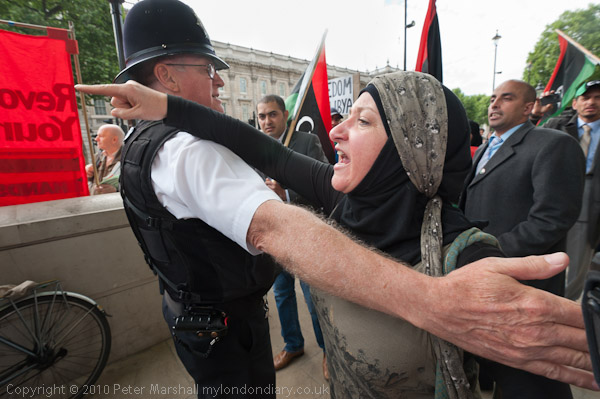
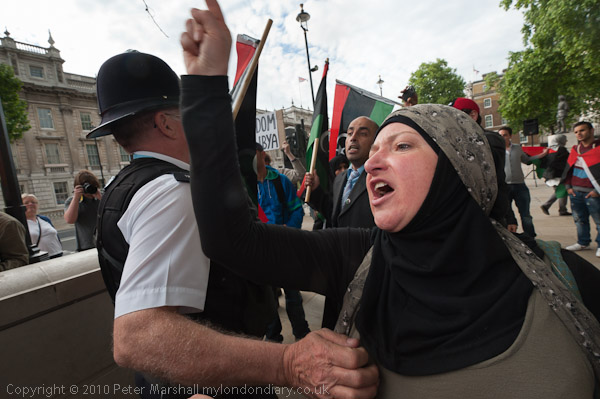
More from this series on My London Diary
After an hour or so, most of the Stop the War supporters left, simplifying the shouting match by leaving just the pro-Gaddafi Libyans at their end of the pitch and the Libyan opposition 50 yards away at the other (by this time the WRP-YS had given up and were just standing around their banner on the sidelines.) Eventually the Gaddafi supporters, perhaps overwhelmed by the greater power of the loudspeakers on the other side compared to their rather puny megaphone (curiously Stop the War had earlier been warned by the police and told they had to stop using a megaphone, but the police took no action against either group of Libyans) decided to give up, and made off towards Parliament Square.
Photographically, apart from trying to cover the various groups at the same time, there were few problems, and for once nearly everything worked perfectly, and the biggest problem I had was in trying to edit down to a sensible number of images. There was just one small problem with the pictures taken on the D700, where a small spot of something or other – perhaps a little bit of spit from someone shouting – had made its home on the large front filter of the 16-35mm, giving a small diffused area near the top centre of every image. Often there was sky there, where it wasn’t a problem, but this also meant there was little or no sign of it when I looked at the images through the viewfinder or on the rear screen. You may still just be able to see a trace of it in some of the pictures on My London Diary where you can see rather more pictures and read more about the events in For and Against Libyan Bombing.

